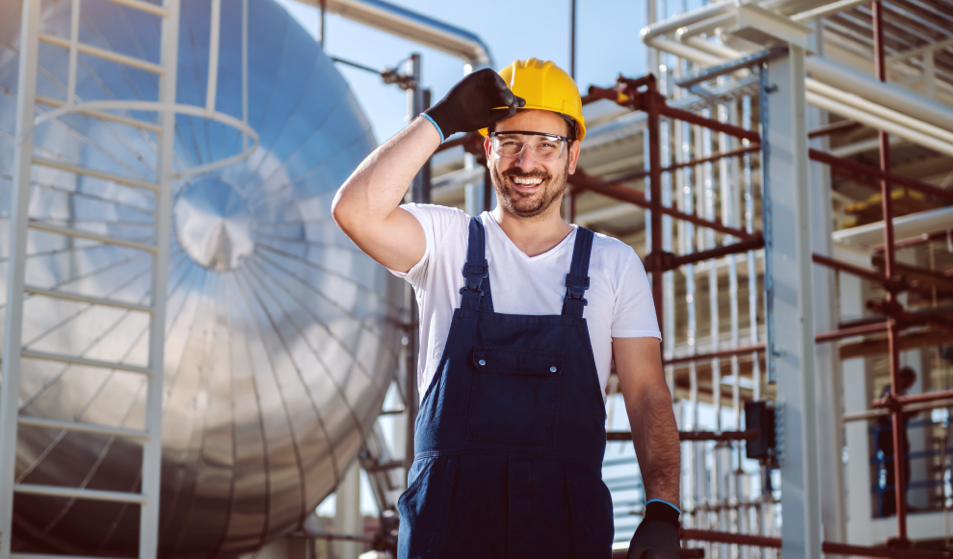Dewatering tanks in crude oil processing are indispensable for separating water from crude oil. This separation is critical to prevent corrosion in storage tanks and pipelines and to maintain the oil’s market value and refining quality. These tanks function on gravity separation principles, allowing water to settle at the bottom due to its higher density.
However, the process extends beyond mere settling. The separation efficiency depends on the oil’s physical properties, tank temperature, and emulsifying agents. Advanced dewatering tanks enhance this process with heating elements and coalescers.
Technology like the ID200h Series Interface Detectors is integral to this process. These 2-wire, 4-20mA loop-powered probes are essential for interface measurement in liquid/liquid and vapour/liquid separations, including emulsions and foam. Suitable for various installations such as Tanks, Decanters, Dehydrators, and Coalescers, they offer versatility in controlling multiple process environments.
The ID200h series excels in emulsion concentration measurement (0 to 100% Hydrocarbon/Water by Volume), adapting to various conditions with a process temperature range from 32°F to 300°F (Standard) and up to 450°F for high-temperature models. With a pressure rating of up to 3000 PSI and an ambient temperature range of -40°F to 185°F, the ID200h detectors are equipped for diverse operational demands, making them an indispensable tool.
How Does this Tank Work?
This operation in tanks is a testament to precision in crude oil processing. The tank’s primary function is to facilitate water separation from oil based on density differences. This separation is crucial for maintaining the crude oil’s quality and ensuring the refining process’s safety and efficiency.
In the dewatering tank, crude oil enters with a mixture of water. Due to the differing densities, water settles at the tank’s bottom, aided by the tank’s structural design, often featuring sloped floors leading to a sump area. However, the separation process is influenced by various factors, such as the physical characteristics of the crude oil, the temperature inside the tank, and emulsifying agents that can stabilize the oil-water mixture.
Advanced desalting systems offer significant advantages, such as those with the ID200h Series Interface Detectors. These detectors enhance the separation process by accurately monitoring the oil-water interface, temperature, and density gradients. Their ability to function in a wide range of temperatures (32°F to 450°F) and under high pressure (up to 3000 PSI) makes them ideal for various operational demands. The ID200h’s precise measurements allow for optimal control of the dewatering process, ensuring efficient separation and maintaining the integrity of the crude oil.
Why is it Necessary?
Dewatering in crude oil processing is not merely a procedural step; it’s a necessity for several critical reasons. The most prominent is the maintenance of oil quality. Water in crude oil can lead to sludge formation, adversely affecting the final product’s refining process and quality. Additionally, water presence in crude oil can cause significant issues like corrosion in storage tanks and pipelines, leading to increased maintenance costs and potential safety hazards.
Environmental and safety considerations are also paramount. Effective dewatering ensures compliance with environmental regulations by minimizing the discharge of contaminated water. It also plays a vital role in reducing the risk of accidents caused by equipment corrosion.
The necessity of this function extends beyond immediate operational concerns. It impacts the long-term efficiency and sustainability of oil refinery operations. By ensuring water removal from crude oil, desalting systems protect equipment, maintain product quality, and uphold environmental standards, underlining their indispensable role in the oil refining industry.
Objectives of a Dewatering System
The objectives of a dewatering system in crude oil processing are multifaceted and crucial for the overall efficiency of an oil refinery. The primary goal is to ensure the purity and quality of the crude oil by effectively removing water and other impurities. This purification process is essential for preventing corrosion and sludge formation, which can impact the oil’s quality and the processing equipment’s integrity.
Another key objective is to enhance operational efficiency. By efficiently separating oil and water, dewatering systems streamline the refining process, reducing downtime and maintenance requirements. This efficiency not only saves time but also reduces operational costs.
Environmental compliance is also a significant objective. Dewatering systems must effectively manage the separation and disposal of water to meet stringent environmental standards, minimizing the ecological impact of oil refining operations.
Finally, safety in the workplace is paramount. Effective dewatering reduces the risk of accidents caused by equipment failure or hazardous conditions due to the presence of water in oil storage and processing facilities. By achieving these objectives, dewatering systems are vital in maintaining oil refineries’ safety, efficiency, and environmental responsibility.
Section 5: Equipment Used for Dewatering
The equipment used in the dewatering process in oil refineries is specialized and varied, designed to efficiently separate oil and water while maintaining the quality of the crude oil. Critical components of this equipment include:
- Separation Tanks: These are the primary vessels where the actual separation of oil and water occurs, often equipped with heating elements and coalescers to enhance the efficiency of the separation process.
- Pumps and Valves: These control the flow of oil and water, ensuring that the separation process is continuous and efficient.
- Sensors and Detectors: Instruments like the ID200h Series Interface Detectors from PMA Ltd. are crucial in this process. These sensors are designed for precise interface measurement in various liquid/liquid and vapour/liquid separation processes. They are capable of handling a wide range of emulsion concentrations (0 to 100% Hydrocarbon/Water by Volume), temperatures (standard range 32°F to 300°F and high-temp up to 450°F), and pressures (up to 3000 PSI). The ID200h’s versatility makes it suitable for various installations, including tanks, decanters, dehydrators, and coalescers.
The ID200h: Enhancing Efficiency
The ID200h Series Interface Detectors from PMA Ltd. represent a significant leap forward in the technology used for dewatering in crude oil processing. These detectors are engineered to provide accurate, real-time data crucial for the efficient operation of dewatering systems.
Advanced Interface Measurement: The ID200h sensors excel in precisely determining the interface between oil and water. This precise measurement is critical in optimizing the separation process, ensuring water is thoroughly removed from the crude oil. By accurately monitoring the oil-water interface, the ID200h helps maintain the quality of the crude oil and prolongs the lifespan of storage tanks and pipelines by preventing corrosion.
Adaptability to Various Conditions: With a wide operational range, the ID200h can function effectively in diverse conditions. It supports a process temperature range of 32°F to 450°F and can withstand pressures up to 3000 PSI, making it versatile for different dewatering environments.
Environmental Compliance and Safety: By enabling more efficient separation and reducing the risk of improper disposal of contaminated water, the ID200h aids refineries in complying with environmental regulations. Additionally, its role in maintaining equipment integrity contributes significantly to workplace safety.
PMA Ltd., with over 52 years of experience in the field, has designed the ID200h to be a tool and a comprehensive solution for the challenges faced in crude oil desalting. It is a testament to PMA Ltd.’s commitment to innovation, efficiency, and environmental responsibility in the oil refining industry.
Conclusion
The dewatering of crude oil tanks is a critical process in the oil refining industry, essential for maintaining product quality, operational efficiency, and environmental compliance. Advanced technologies like the ID200h Series Interface Detectors from PMA Ltd. have revolutionized this process, offering precision, versatility, and adaptability. By incorporating such advanced equipment, refineries can significantly enhance the efficiency and safety of their operations, ensuring the continued production of high-quality crude oil. Adopting these technologies is a step towards operational excellence and a stride towards a more sustainable and responsible future in oil refining.



